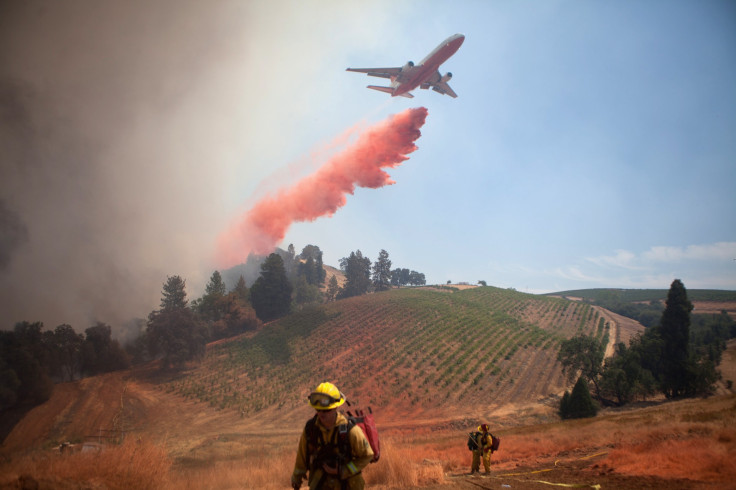Northwest Wildfires 2014: Federal Money To Fight Fires Is Running Out Despite Cost-Saving Prisoners Used As Firefighters

The U.S. federal government is burning through its annual budget to quench wildfires in the Northwest even as states use thousands of prisoners as firefighters. While more than two dozen major Northwest wildfires continue chewing through brush and forests in Washington, Idaho, Oregon and California, the $1.4 billion available through the U.S. Forest Service and Department of Interior is on pace to dry up by the end of the month, though the next fiscal year doesn’t begin until October.
U.S. Agriculture Secretary Tom Vilsack made the announcement Tuesday and said once funds run out, the agency will need to divert $400 to $500 million from other programs aimed at preventing wildfires. It would be the seventh time in 12 years the agency has done so.
Though the states use portions of their budgets to handle the fires, they also commonly receive federal money to cover about half of the costs. Fighting the country’s wildfires now costs taxpayers about $3 billion a year, three times the cost 20 years ago, even with up to a quarter of some firefighting forces coming from prison labor.
Four thousand of the 15,000 people fighting wildfires in California are serving state prison terms for crimes like drug trafficking, minor battery and robbery. The inmates live in barracks and work in 24-hour shifts, common among firefighters, making about $2 a day. Professional firefighters in the same area make about $34 per hour or $816 a day. But for every day the inmates fight fires, they shave two days off their sentences. The program saves California more than $100 million a year, corrections officials told NPR. Oregon, Washington, Idaho and other states across the country have similar programs on smaller scales.
Fighting fires in the West is becoming more expensive as more homes and properties are developed on previously wild land and as average summer temperatures are rising in the area, according to a 2013 report on wildfire costs by Headwaters Economics. If half of wild lands are developed, up from about 16 percent developed now, annual firefighting costs could soar to between $2.3 and $4.3 billion, the report said. And though much of the country has enjoyed a cooler-than-normal summer, temperatures in the Northwest climbed to record levels this season.
Scorching heat in part is fueling more and larger wildfires. Data from the National Interagency Fire Center shows a general trend of increasing acreage burned by U.S. wildfires since 1960, especially in the last 15 years. Headwaters Economics argues that a 1 degree rise in average summer temperature in California caused a 35 percent growth in acreage burned.
For now, Vilsack is lobbying to add $615 million to this and next year’s budget to fight wildfires.
© Copyright IBTimes 2024. All rights reserved.






















